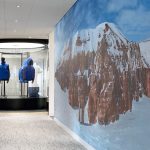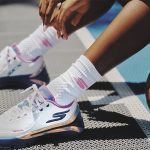What a difference a year makes. The first quarter results for sporting goods industry vendors in 2010 reflect a stunning turnaround from last year’s results when the market was dealing with the effects of a stronger U.S. dollar, the impact of the global recession and moves by retailers to narrow inventories to a level that was starting to stress the supply chain. In sharp contrast, this year’s first quarter results reported by vendors reflect aggressive actions to slash their inventories and contain cost-moves that expanded margins, lowered SG&A as a percent of sales and increased profits by more than half versus the prior year period.
From a 30,000 foot view, the sporting goods market was a much happier place to be in the first quarter ended March 31, with the exception of the fitness equipment business, according to quarterly sales and profit information compiled by The SportsOneSource Group and Sports Executive Weekly. The public companies (and others that report quarterly data to the SEC) on the vendor side of the business in the sports and outdoor markets saw an aggregate increase of 8.2% in the 2010 first quarter and the bottom line jumped nearly 60% for the consolidated business versus a revenue decline of more than 10% in the 2009 period that also saw profits fall by more than a third. The sharp declines in gross margins across the board in the year-ago quarter gave way to margins this year that improved on average by 215 basis points on a consolidated basis and pushed overall vendor return on sales, or ROS, up 270 basis points to 8.8% of sales in the first quarter.
Much of the margin improvement can be traced to moves by vendors to right-size inventories and reduce the percentage of sales coming form lower margin off-price product. On a consolidated basis, inventories were down on average more than 12% at quarter-end this year.
One result of the economic downturn is the dearth of M&A deal flow, which makes year-on-year comparisons easier than in quarters past.
First quarter results shown in the charts on pages 4 and 5 are posted for those companies that have reported for the period ended closest to the end of March.
First quarter results shown in the charts on pages 4 and 5 are posted for those companies that have reported for the period ended closest to the end of March.
However, because the report is not a clear picture of the entire industry, SEW feels the total numbers are less significant than the trending information provided in the percentage increases and decreases.
Of the 51 vendor companies tracked on the charts-14 posted a revenue decrease for the first quarter, almost the direct opposite in Q1 last year when only 13 of 50 companies posted an increase for the period. Only seven companies posted a loss for the 2010 first quarter, less than half the number that did so in the year-ago quarter, and only one company (K-Swiss) failed to narrow its loss for the first quarter this year. Seven companies swung to a profit for Q1 from a loss in the year-ago period.
The vendors with most of their business in the softgoods end of the market fared slightly better than their hardgoods brethren in the revenue line, but the consolidated hardgoods business saw the bottom line improve far more than the profits of the softgoods business.
Of the 27 softgoods companies reporting results, only eight posted a revenue decrease for the period versus only six reporting a revenue increase in Q1 last year. On a reported basis, which includes the effects of currency changes, consolidated softgoods revenues increased 8.4% for the period. Not surprisingly, Skechers, which has benefitted greatly from the toning footwear trend, posted the highest revenue growth for the period, with a gain of 43.5% for the quarter.
Excluding Iconix, which derives all of its revenues from licensing, the other top revenue gainers for period included Gildan (+33.5%), LaCrosse (+32.1%), Delta Apparel (+26.0%) and Crocs (+23.7%). Heelys (-28.1%) was the biggest softgoods revenue decliner in the first quarter. K-Swiss (-11.0%) was the only other company in the segment to post a double-digit decline for the period.
Within the softgoods business, the outdoor sub-segment outpaced the athletic apparel and footwear sub-sectors. Outdoor footwear/apparel companies saw consolidated revenues increase 13.2% in the quarter, compared to an 8.6% increase for companies whose majority of revenues comes from athletic apparel and an 8.0% increase for companies that generated the majority of their revenues from athletic footwear.
Gross margins improved nearly 270 basis points on a consolidated basis in the softgoods segment, despite a sharp (-670 bps) GM decline at Rocky Brands. Crocs posted the biggest improvement in margins, increasing 1,510 basis points to 52.0% of sales in the first quarter.
Volcom (54.2%), Quiksilver (53.2%), Puma AG (52.2%) and Deckers (50.0%) joined Crocs as the only softgoods companies with gross margins coming in at least at 50% of sales.
As in the revenue line, Skechers also posted the biggest increase in profits for the period as well. SKX saw net income jump a staggering 663% for the quarter, reflecting an 11.4% return on sales versus just 2.1% of sales in the year-ago period. Gildan also posted a hefty increase in profits, reporting a 587% net income increase for the quarter to 14.9% of sales. Quiksilver was the other softgoods company reporting a triple-digit profit increase for the quarter, but the 235% increase in net income brought the company’s return on sales to just 2.0% of sales for the quarter.
Softgoods companies pared inventories 12.0% on a consolidated basis, with only Gildan (+12.5%) and Skechers (+9.3%) posting gains at quarter-end.
Of the 24 hardgoods companies reporting results, only six posted a revenue decrease for the period versus only seven reporting a revenue increase in the first quarter last year. On a reported basis, which includes the effects of currency changes, consolidated hardgoods revenues increased 7.6% for the period while profits surged 131% for the quarter.
In a sharp departure from last year, golf companies fared much better in the 2010 first quarter. Aldila, which makes components for golf clubs and hockey equipment, among other markets, posted the biggest revenue increase of the hardgoods segment, with the top-line growing 16.8% for the first quarter. TaylorMade-adidas Golf posted the second-largest revenue increase on a reported basis with a 14.9% increase for the period, but currency exchange rate changes had a negative impact on the reported results (TM-aG is owned by Germany-based Adidas Group). TM-aG currency-neutral revenues grew 16% for the period.
Brunswick Corp. revenues for the fitness and bowling & billiards businesses also grew 14.9% for the quarter. Dorel Industries (+12.6%), Callaway Golf (+11.4%), Shimano (+11.4%) and Amer’s Winter & Outdoor group (+10.5%), which includes Salomon, Suunto, Arc’Teryx and Atomic, rounded out the hardgoods companies with a double-digit increase. On a currency-neutral basis, Amer Winter & Outdoor revenues were up 9% for the quarter.
The golf sub-segment in hardgoods was the only group to post a sales increase on a consolidated basis. Sales in the sub-segment that includes Acushnet Golf (Cobra, Footjoy, Titleist), Aldila, Adams Golf, Callaway, TaylorMade and Wilson Golf grew 10.4% for the quarter.
Adams Golf was the only company in the group to post a revenue decline for the quarter. The fitness equipment sub-segment saw revenues fall 7.5% for the quarter and firearms sub-segment revenues reversed a nearly two year run, declining 2.5% for the quarter, due entirely to a 9.4% decrease at Freedom Group, the parent of Remington Arms and other forearms and ammunition brands.
Gross margins dipped 35 basis points on a consolidated basis in the hardgoods segment, due entirely to sharp declines from Shimano (-910 bps) and Nautilus (-570). Excluding those two companies, hardgoods margins would have jumped 265 basis points for the first quarter.
Cybex (+895 bps) posted the largest improvement in gross margin, with Adams Golf (+665 bps), Aldila (+555 bps), Head NV (+485) and Sturm Ruger (+310 bps) rounding out the top five improvements.
While NLS posted a margin decline for the quarter, it was still the only hardgoods company with gross margins over 50% of sales. Adams and Callaway both surpassed 45% of sales on the GM line.
Only three hardgoods companies posted a loss in the first quarter and each sharply narrowed those losses versus the year-ago period.
Acushnet posted the largest increase in profits, with operating profits growing 393% for the period. Acushnet operating margins grew ten points to 12.6% of sales from 2.6% of sales since the year-ago period.
Adams Golf saw net income increase 351% for the quarter to 7.4% of sales. Callaway Gold (+198%), Johnson Outdoors (+151%), Freedom Group (+136%) and Brunswick (+124%) all posted triple-digit gains in the profit line.
Hardgoods companies pared inventories 13.1% on a consolidated basis.














